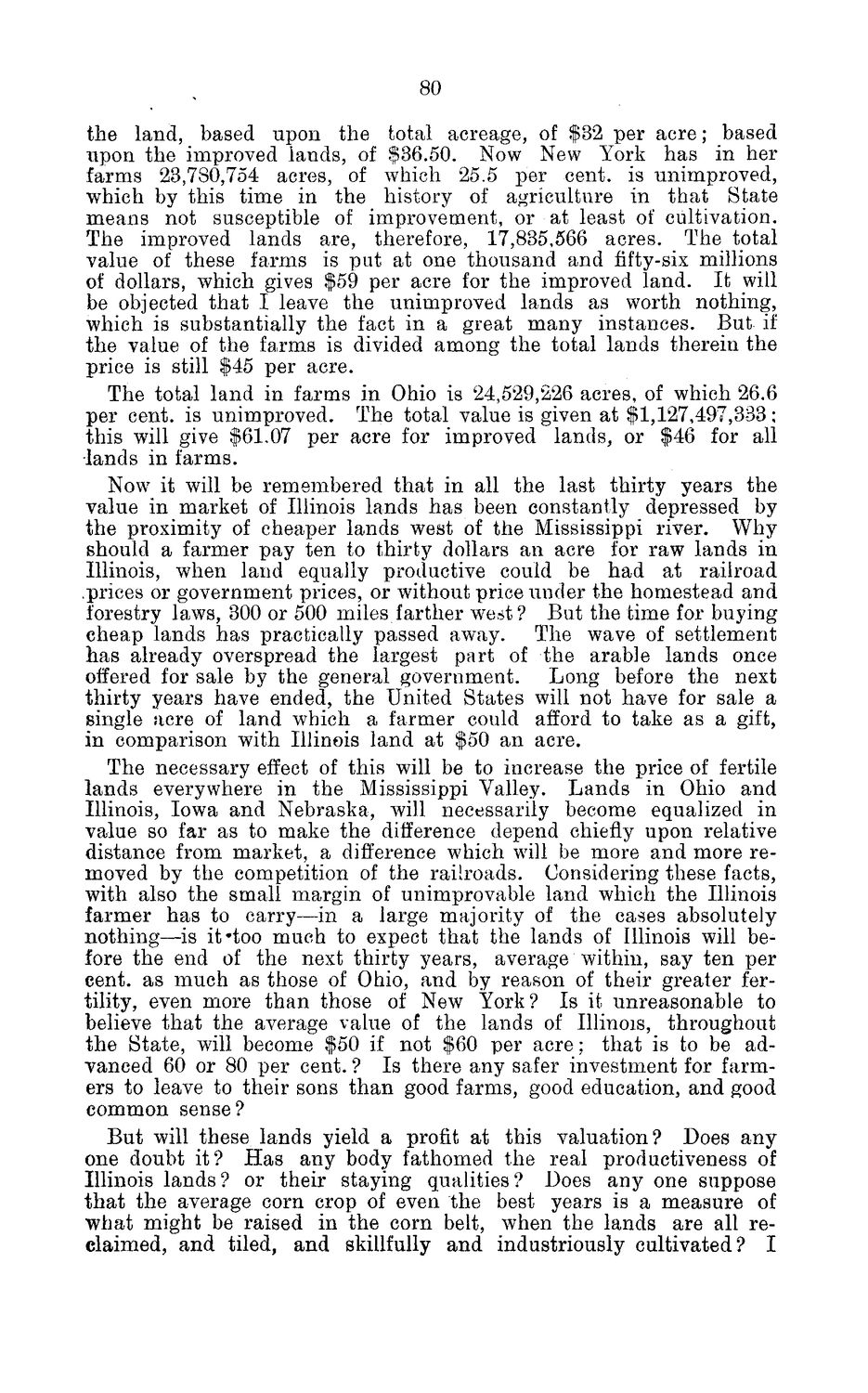| |
| |
Caption: Board of Trustees Minutes - 1884
This is a reduced-resolution page image for fast online browsing.

EXTRACTED TEXT FROM PAGE:
80 the land, based upon the total acreage, of $32 per acre; based upon the improved lands, of $36.50. Now New York has in her farms 23,780,754 acres, of which 25.5 per cent, is unimproved, which by this time in the history of agriculture in that State means not susceptible of improvement, or at least of cultivation. The improved lands are, therefore, 17,835,566 acres. The total value of these farms is put at one thousand and fifty-six millions of dollars, which gives $59 per acre for the improved land. It will be objected that I leave the unimproved lands as worth nothing, which is substantially the fact in a great many instances. But if the value of the farms is divided among the total lands therein the price is still $45 per acre. The total land in farms in Ohio is 24,529,226 acres, of which 26.6 per cent, is unimproved. The total value is given at $1,127,497,333; this will give $61.07 per acre for improved lands, or $46 for all lands in farms. Nowr it will be remembered that in all the last thirty years the value in market of Illinois lands has been constantly depressed by the proximity of cheaper lands west of the Mississippi river. Why should a farmer pay ten to thirty dollars an acre for raw lands in Illinois, when land equally productive could be had at raiiroad .prices or government prices, or without price under the homestead and forestry laws, 300 or 500 miles farther west? But the time for buying cheap lands has practically passed away. The wave of settlement has already overspread the largest part of the arable lands once offered for sale by the general government. Long before the next thirty years have ended, the United States will not have for sale a single acre of land which a farmer could afford to take as a gift, in comparison with Illinois land at $50 an acre. The necessary effect of this will be to increase the price of fertile lands everywhere in the Mississippi Valley. Lands in Ohio and Illinois, Iowa and Nebraska, will necessarily become equalized in value so far as to make the difference depend chiefly upon relative distance from market, a difference which will be more and more removed by the competition of the railroads. Considering these facts, with also the small margin of unimprovable land which the Illinois farmer has to carry—in a large majority of the cases absolutely nothing—is it'too much to expect that the lands of Illinois will before the end of the next thirty years, average within, say ten per cent, as much as those of Ohio, and by reason of their greater fertility, even more than those of New York? Is it unreasonable to believe that the average value of the lands of Illinois, throughout the State, will become $50 if not $60 per acre; that is to be advanced 60 or 80 per cent. ? Is there any safer investment for farmers to leave to their sons than good farms, good education, and good common sense? But will these lands yield a profit at this valuation? Does any one doubt it? Has any body fathomed the real productiveness of Illinois lands? or their staying qualities? Does any one suppose that the average corn crop of even the best years is a measure of what might be raised in the corn belt, when the lands are all reclaimed, and tiled, and skillfully and industriously cultivated? I
| |